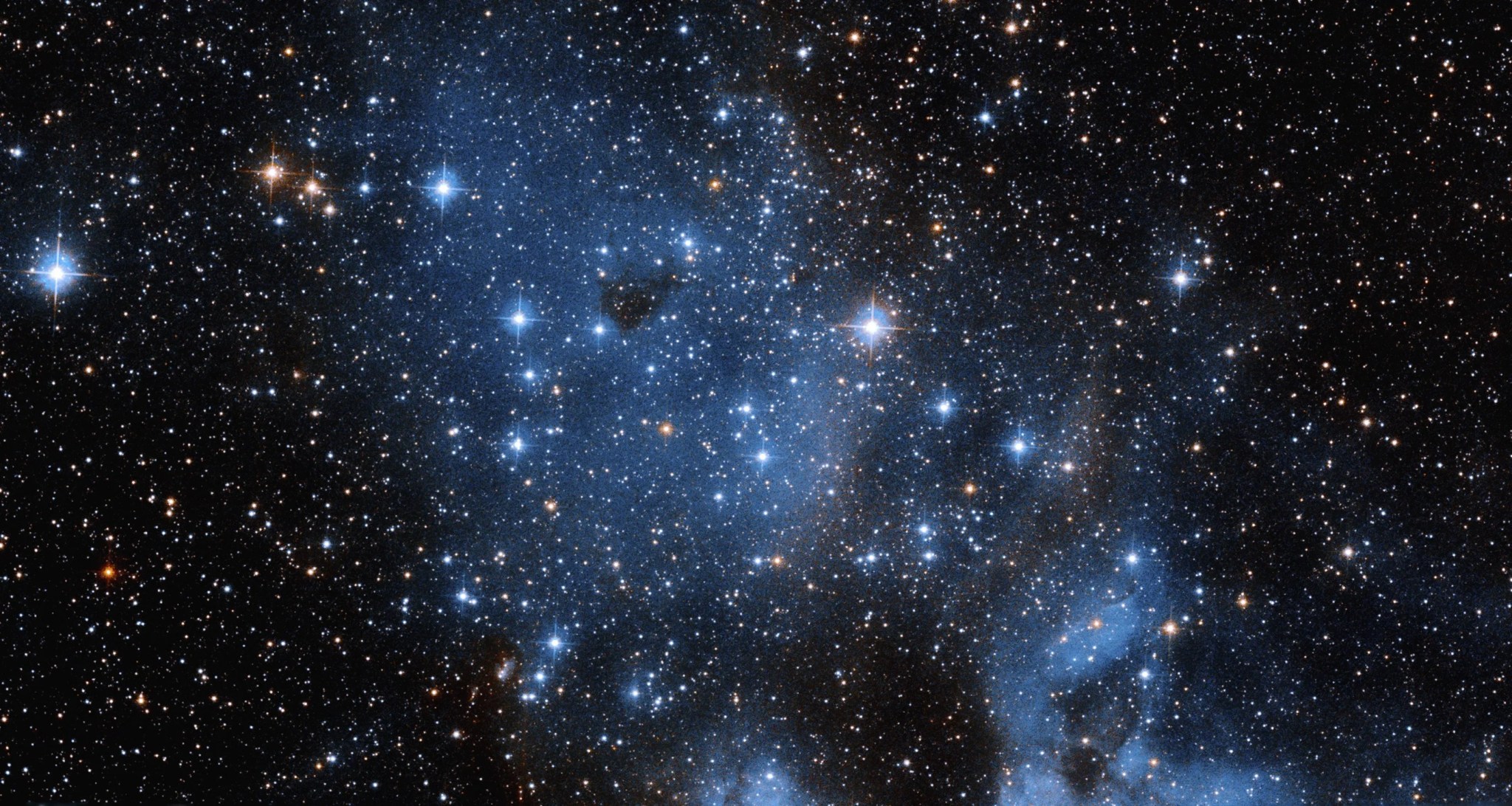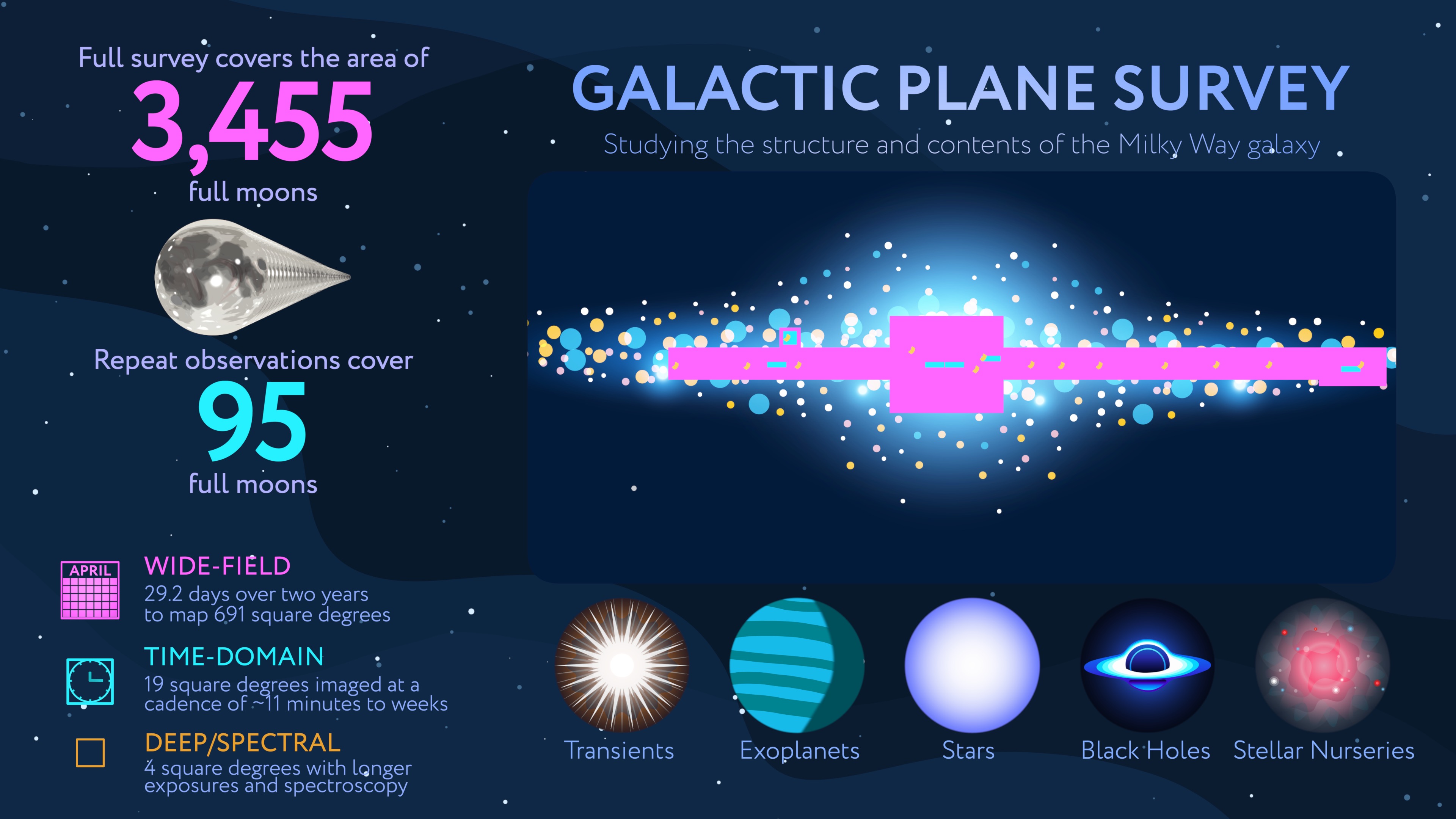Against a backdrop littered with tiny pinpricks of light glint a few, brighter stars. This whole collection is NGC 1858, an open star cluster in the northwest region of the Large Magellanic Cloud, a satellite galaxy of our Milky Way that boasts an abundance of star-forming regions. NGC 1858 is estimated to be around 10 million years old.
Open clusters are a type of star cluster with loose gravitational attraction between the stars, which causes the cluster to be irregularly shaped and its stars to be spread out. NGC 1858 is also an emission nebula, which is a cloud of interstellar gas that has been ionized by ultraviolet wavelengths radiating off of nearby stars. The gas of the nebula emits its own light at visible wavelengths, seen here as a faint cloud that populates the middle and bottom right of the image.
The stars within this young cluster are at different phases of their evolution, making it a complex collection. Within NGC 1858, researchers have detected a protostar, a very young, emerging star, indicating that star formation within the cluster may still be active or has stopped very recently. The presence of an emission nebula also suggests that star formation recently occurred here, since the radiation required to ionize the gas of the nebula comes from stars that only live a short time.
NGC 1858 is located about 160,000 light-years away in the constellation Dorado and contains multiple massive stars, which can be seen shining brightly throughout the center of the image. The cluster is located in a crowded area of the sky, and the large number of stars around the cluster makes it difficult to study alone. To survey these distant stars, scientists relied on the Hubble Space Telescope’s unique resolution and sensitivity at visible and infrared wavelengths.
Media Contact:
Claire Andreoli
NASA's Goddard Space Flight Center, Greenbelt, MD
301-286-1940
































